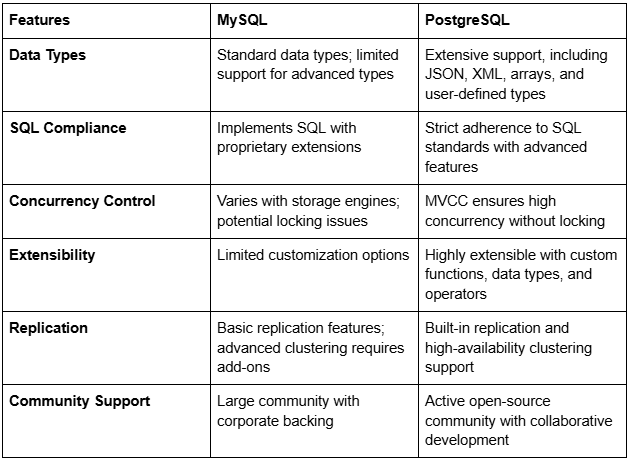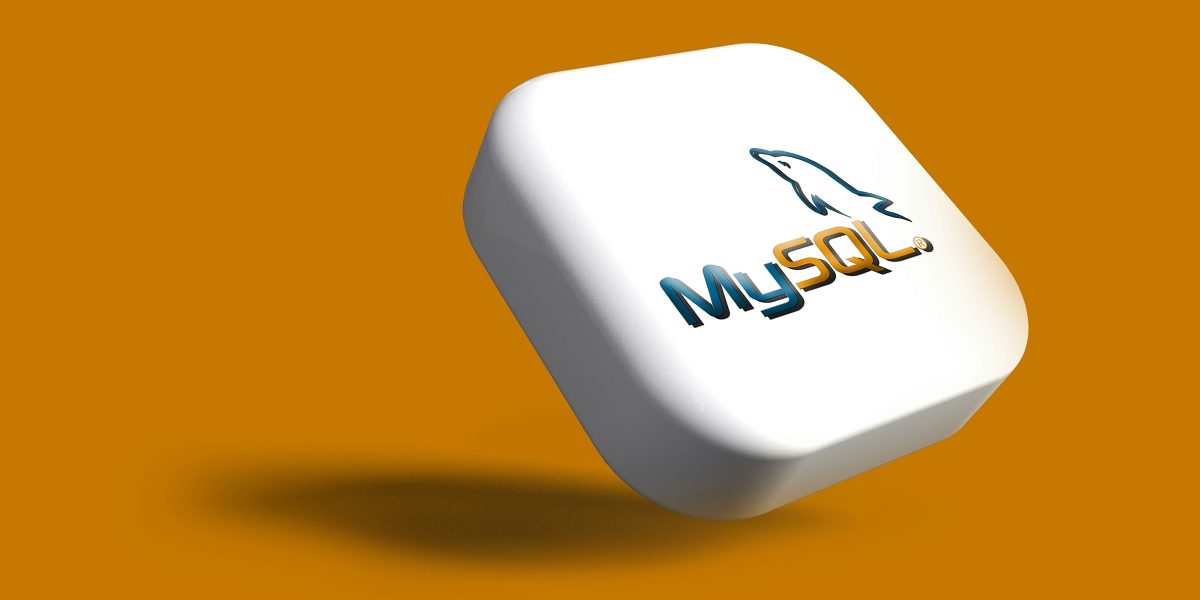By: Hevo Data
As businesses scale and data complexity grows, database performance, scalability, and advanced features become more critical than ever. While MySQL has served as a reliable database solution for many years, it often struggles to meet the demands of modern applications. PostgreSQL is recognized for its advanced features, often making it a popular choice for organizations looking to enhance their infrastructure.
However, moving from MySQL to PostgreSQL is not a straightforward task. It requires a clear understanding of the differences between the two systems to avoid compatibility issues, data loss, or performance bottlenecks. This guide provides actionable insights into these differences, helping you make informed decisions for a smooth MySQL to PostgreSQL migration.
To fully appreciate the key distinctions, let’s first understand the fundamentals of MySQL and its features.
What is MySQL?
MySQL is a popular open-source relational database management system (RDBMS) known for its simplicity and efficiency. Developed in the mid-90s, it has since become a go-to solution for many small and medium-sized businesses and applications requiring basic database functionalities.
Key Features of MySQL:
- Open-Source Availability: Freely accessible and modifiable under the GNU license.
- Client/Server Architecture: Supports multi-layered design for distributed database operations.
- Scalability: Capable of handling databases with millions of rows and tables.
- Cross-Platform Compatibility: Runs seamlessly on major operating systems like Windows, Linux, and macOS.
- High Performance: Optimized for speed and efficiency in read-heavy applications.
- Security: Right access control and data encryption to safeguard sensitive information.
While MySQL remains a dependable choice for many, it often lacks the advanced functionalities required for complex modern applications. To explore an alternative that addresses these limitations, let’s move on to PostgreSQL.
What is PostgreSQL?
PostgreSQL is an advanced, open-source object-relational database management system (ORDBMS) that prioritizes extensibility and compliance with SQL standards. First released in 1996, PostgreSQL has evolved into one of the versatile and reliable databases for handling diverse workloads.
Key Features of PostgreSQL:
- Extensibility: Supports custom data types, operators, and user-defined functions.
- ACID Compliance: Supports reliable transactions with atomicity, consistency, isolation, and durability.
- MVCC (Multi-Version Concurrency Control): Allows high levels of concurrent transactions without locking issues.
- Advanced Data Types: Includes JSONB, XML, arrays, and other types for managing complex data structures.
- Full-Text Search: Native capabilities for efficient text search operations.
- Foreign Data Wrappers: Facilitates integration with other databases and external data sources.
Understanding the core features of both MySQL and PostgreSQL sets the foundation for a detailed comparison of their differences. Now, let’s examine these distinctions in depth.
Differences Between MySQL and PostgreSQL
MySQL to PostgreSQL migration requires a deep understanding of their differences to ensure smooth migration. Below is an in-depth comparison of the two databases, highlighting key aspects to consider during the transition.
1. Data Types and Schema Definitions
- MySQL:
MySQL provides a limited set of standard data types, focusing primarily on essential types like integers, strings, and dates. While it supports JSON, the functionality is basic and lacks the advanced indexing or querying options that modern applications often require. This limitation can pose challenges when working with complex or unstructured data. - PostgreSQL:
PostgreSQL offers a wide array of advanced data types, including JSONB (binary JSON), arrays, hstore (key-value storage), and user-defined types. JSONB, in particular, enables efficient indexing and querying of structured data, making it ideal for applications dealing with semi-structured or dynamic datasets. PostgreSQL’s flexibility in defining schemas allows developers to handle complex data structures seamlessly.
2. SQL Compliance and Syntax
- MySQL:
MySQL incorporates its own proprietary SQL extensions, which deviate from standard SQL. While this can simplify some operations, it can also create inconsistencies when working with applications designed to adhere strictly to SQL standards. Some advanced SQL features, like window functions and recursive queries, are either absent or limited in MySQL. - PostgreSQL:
PostgreSQL is highly compliant with SQL standards and supports a wide range of advanced SQL functionalities. Features such as Common Table Expressions (CTEs), window functions, and recursive queries provide powerful tools for developers to handle complex data manipulation tasks. PostgreSQL’s adherence to standards may improve compatibility with modern applications and data analytics workflows.
3. Transactions and Concurrency
- MySQL:
MySQL relies on storage engines like InnoDB for transaction management. While effective in many scenarios, InnoDB’s locking mechanisms can lead to contention in high-concurrency environments. As a result, simultaneous transactions may experience delays or deadlocks. - PostgreSQL:
PostgreSQL uses Multi-Version Concurrency Control (MVCC), allowing transactions to be handled without locking. This allows multiple users to perform read and write operations simultaneously without interfering with each other. MVCC makes PostgreSQL particularly well-suited for applications requiring high transaction throughput and minimal downtime.
4. Extensibility
- MySQL:
MySQL has limited support for extensibility, relying primarily on its built-in functionality. Developers cannot easily add custom data types, operators, or extensions, which can be restrictive for applications with unique requirements. - PostgreSQL:
PostgreSQL is designed to be highly extensible. Users may define custom data types, operators, and functions to meet specific needs. Additionally, PostgreSQL supports a range of extensions, such as PostGIS for geospatial data and pg_partman for partition management. This flexibility allows PostgreSQL to adapt to a wide variety of use cases beyond traditional RDBMS capabilities.
5. Replication and High Availability
- MySQL:
MySQL provides basic replication options, such as master-slave and master-master configurations. However, advanced clustering and high-availability setups typically require third-party tools, adding complexity and cost. MySQL’s replication is functional but may not offer the robustness needed for large-scale, fault-tolerant deployments. - PostgreSQL:
PostgreSQL includes built-in support for logical and streaming replication, making it easy to set up high-availability configurations. Features like hot standby and cascading replication enable efficient load balancing and disaster recovery. PostgreSQL’s replication options are robust and designed to handle complex, high-traffic environments with minimal additional configuration.
6. Community and Support
- MySQL:
MySQL has a large and active user community supported by Oracle Corporation. While this backing provides resources and documentation, some users feel constrained by Oracle’s influence on the platform’s development and licensing decisions. - PostgreSQL:
PostgreSQL is maintained by a global open-source community, with contributions from individuals and organizations worldwide. This diverse collaboration fosters innovation, transparency, and a wide range of freely available resources. PostgreSQL’s community-driven approach encourages continuous development and a focus on addressing user needs.
This in-depth understanding of the differences between MySQL and PostgreSQL highlights why organizations often choose PostgreSQL for modern, complex applications. To make these distinctions even clearer, let’s present them in a concise, easy-to-read summary table.
Summary Table of Differences
 Now that you have a clear comparison, the next step is to simplify the migration process using a platform like Hevo Data.
Now that you have a clear comparison, the next step is to simplify the migration process using a platform like Hevo Data.
Leveraging Hevo Data for MySQL to PostgreSQL Migration
Migrating from MySQL to PostgreSQL can be complex, requiring careful planning and execution to avoid errors. Hevo Data simplifies the process with its no-code platform, aimed at making database migration more efficient and straightforward.
Key Features of Hevo Data
- Automated Data Pipelines: Reduces manual effort by automating the data migration process.
- Real-Time Synchronization: Supports continuous data flow during migration, helping to reduce downtime and disruptions.
- Schema Mapping and Transformation: Automatically adapts MySQL schemas to PostgreSQL-compatible formats.
- Enhanced Security: Protects sensitive data with encryption and strict access controls.
With the differences clarified and tools like Hevo Data available, you may approach your migration journey with a better understanding of the process.
Conclusion
Migrating from MySQL to PostgreSQL is a strategic decision that unseals advanced database features, better scalability, and superior performance. Understanding the key differences between the two, such as data types, SQL compliance, concurrency handling, extensibility, and replication capabilities, may help facilitate a smoother and more informed transition.
By adopting a structured approach and utilizing modern tools, you may help reduce risks and complexities during migration. Tools like Hevo Data may help streamline the process by automating data pipelines, real-time synchronization, and schema mapping, giving you more time to focus on scaling applications and utilizing PostgreSQL effectively.
Consider modernizing your database infrastructure with Hevo Data. With a 14-day free trial, you may explore the MySQL to PostgreSQL migration process and see how it can simplify your workflow.
Published by Anne C.

















